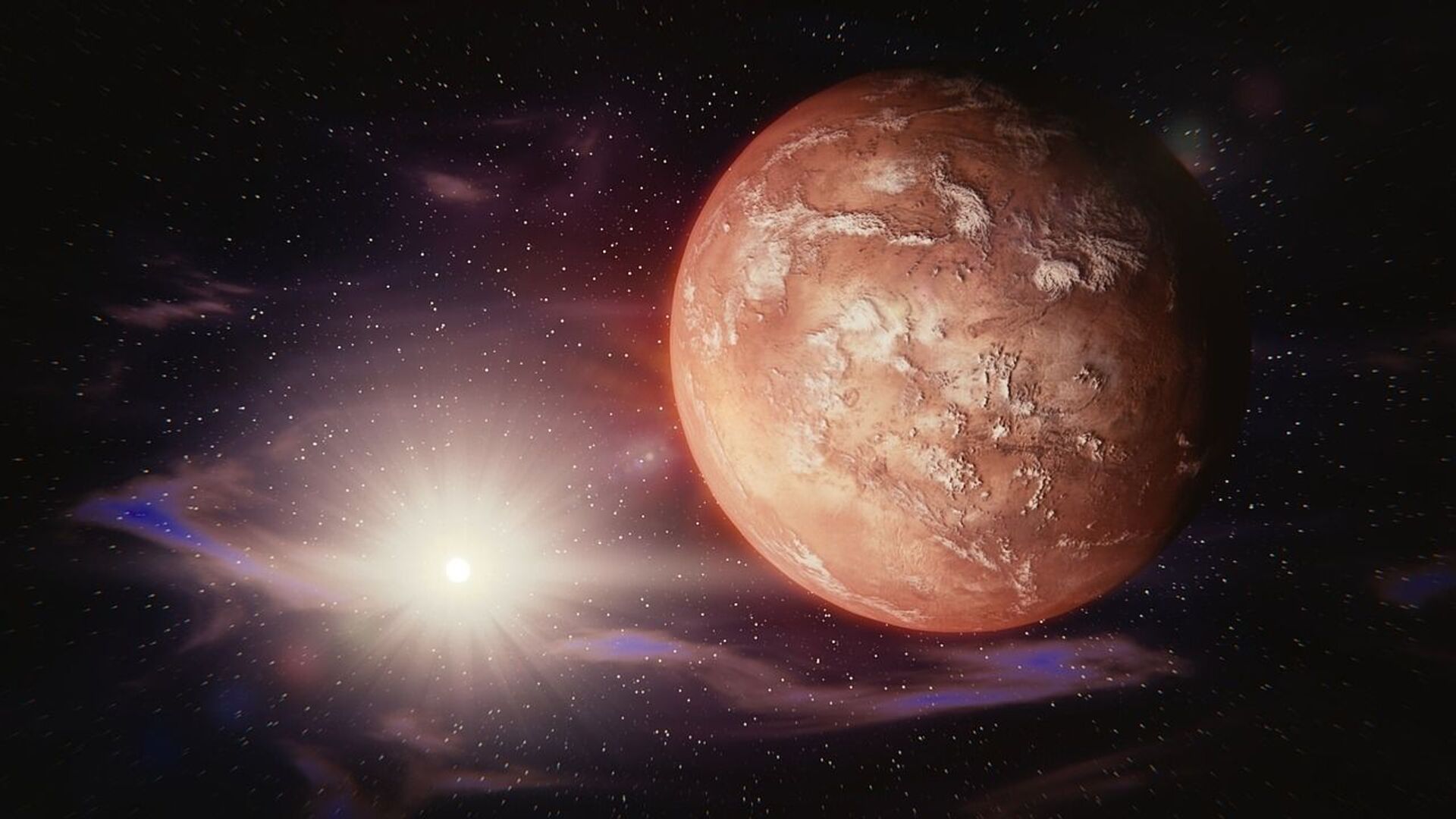Martian Lakes Detected in 2018 May Have Been ‘Dusty Mirage’ - Study
00:55 GMT 25.01.2022 (Updated: 10:10 GMT 30.11.2022)

CC0 / /
Subscribe
A study published on Monday leads researchers to believe what was previously thought of as evidence of liquid water was actually just a mirage. Though this finding debunks previous excitement in the ongoing research of life on Mars, the evidence isn’t a disappointment to some researchers.
In 2018, researchers found what they believed to be evidence of water existing on Mars’ surface lying beneath the ice of its south pole. But researchers at the University of Texas at Austin now have evidence leading them to believe that what lies beneath the ice of Mars’ south pole are actually lava deposits rich in iron, or possibly dried up riverbeds covered in mineral deposits.
An international team of researchers published their findings in the journal Geographical Research Letters, revealing that the reflection of what was believed to be evidence of water actually matched other volcanic plains found all over the surface of Mars.
The study was conducted using a computer model, built by lead author Cyril Grima, to cover the red planet in ice and observe how it changed the radar data. Doing this caused Mars’ volcanic plains to look as though they were made of liquid water.
“For water to be sustained this close to the surface, you need both a very salty environment and a strong, locally generated heat source, but that doesn’t match what we know of this region,” said Grima, who serves as a planetary scientist at the University of Texas Institute for Geophysics.
But Grima is optimistic, believing that these continued discoveries will eventually lead researchers to more information about the history of Mars.
“On Earth, iron-rich lava flows can leave behind rocks that similarly reflect radar. Other possibilities include mineral deposits in dried river beds. Either way, figuring out what they are could answer important questions about Mars’ history,” said Grima.
“Although there may not be liquid water trapped under the southern polar cap, there is plenty of water ice on Mars, including in the thick polar caps. The new study hints at Mars’ wetter past,” he added.
A study conducted in the summer of 2021 also sought to investigate the cause of the unexplained pools of reflective water, arguing that the source was most likely clay. Isaac Smith, who was the lead author of that study but was not involved in Monday’s published study, commented on Grima’s findings:
“I think the beauty of Grima’s finding is that while it knocks down the idea there might be liquid water under the planet’s south pole today, it also gives us really precise places to go look for evidence of ancient lakes and riverbeds and test hypotheses about the wider drying out of Mars’ climate over billions of years.”
Other recent studies which have come to light suggest that Mars was actually once a frigid and wet planet three billion years ago, including both an ocean in its northern part, as well as ice caps and glacial valleys.
Though the study may be disappointing for some, Smith and Grima are now working to find water on Mars in an effort to seek out what could be a potential resource for human landings, as well as evidence of previous life forms.
